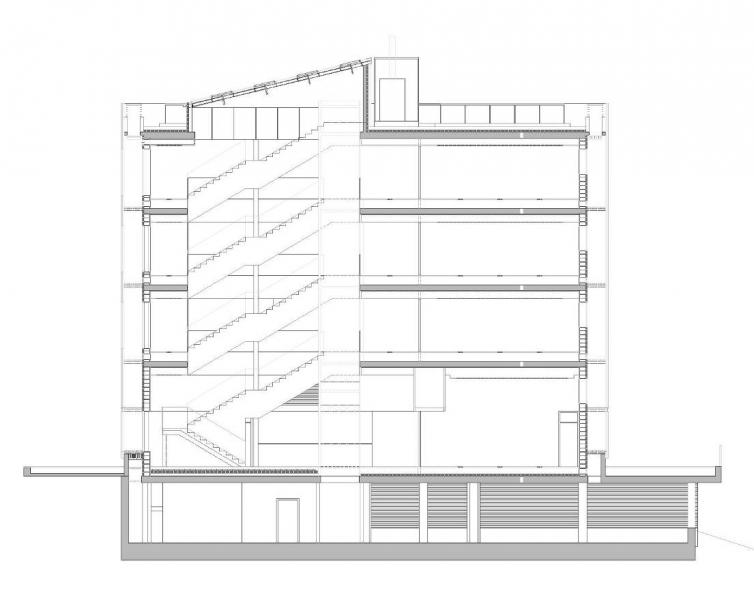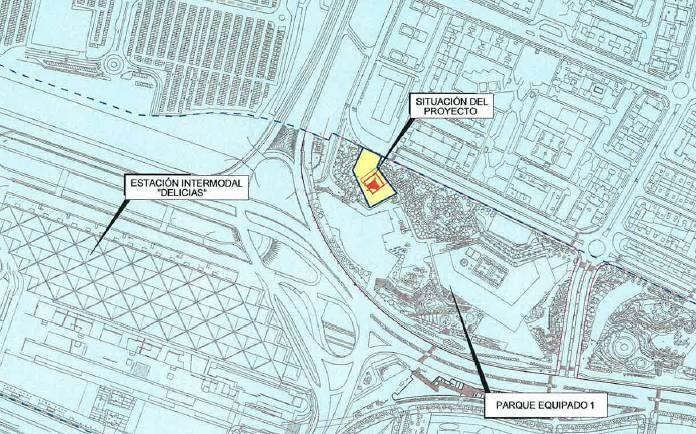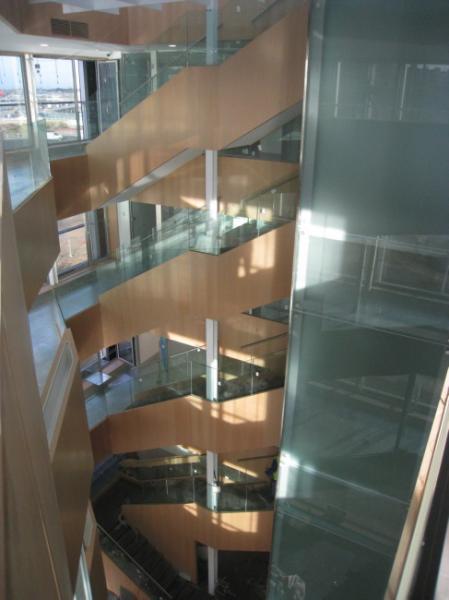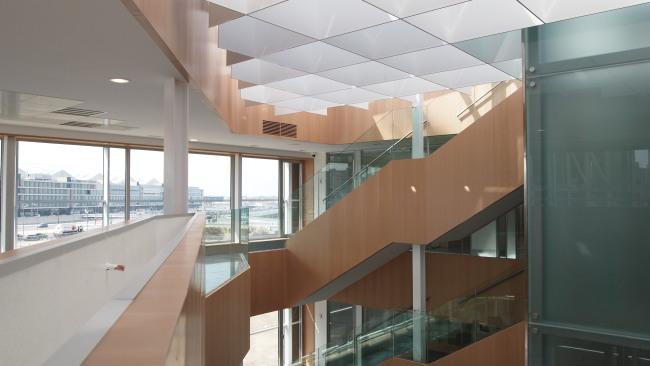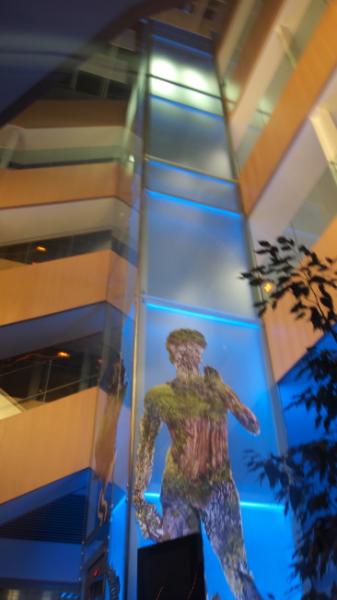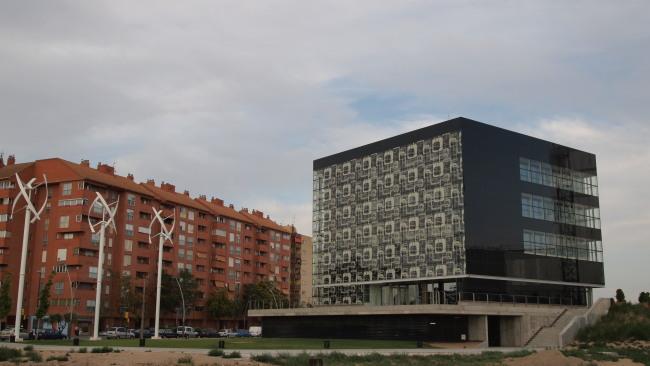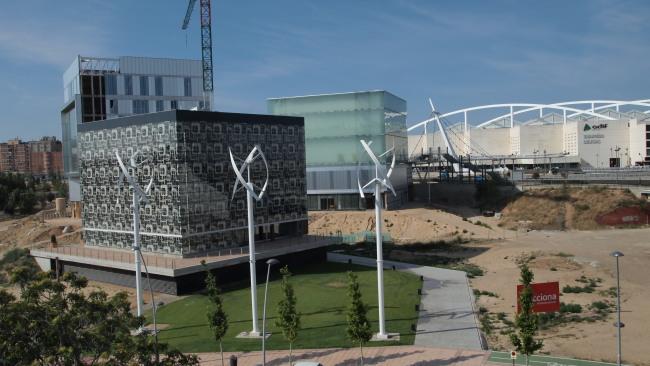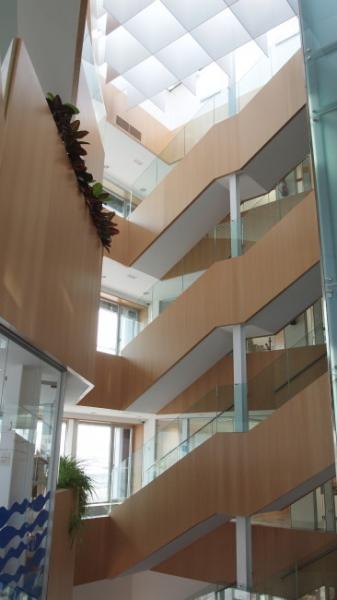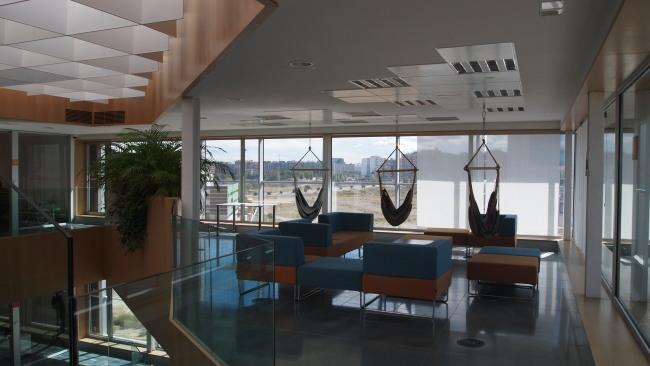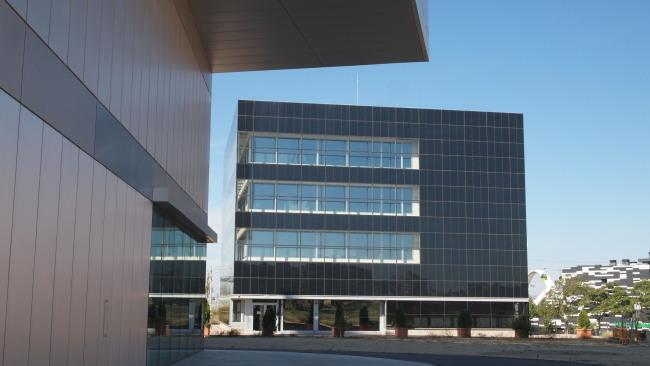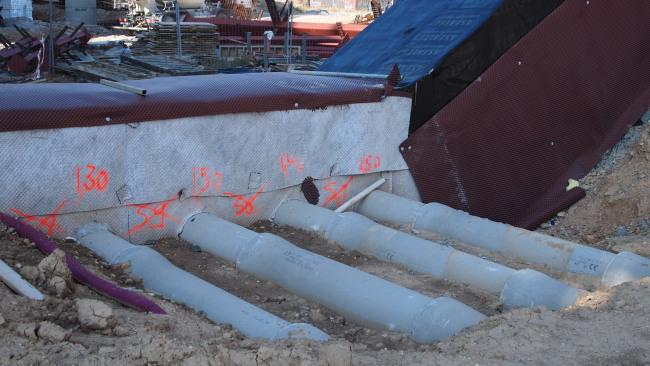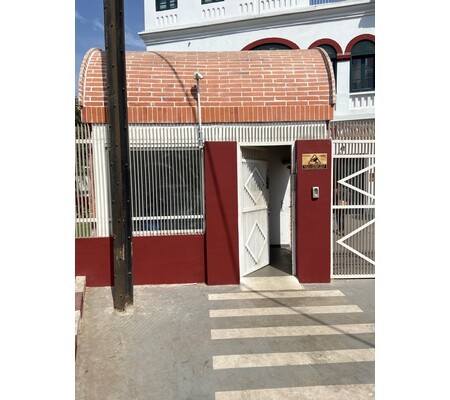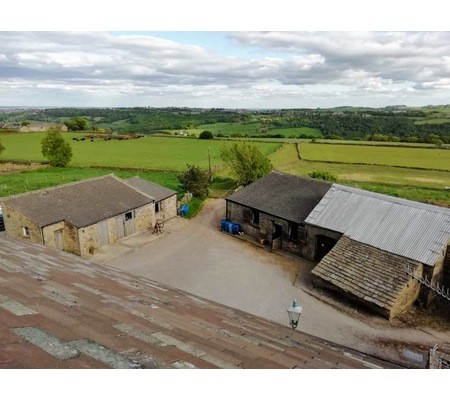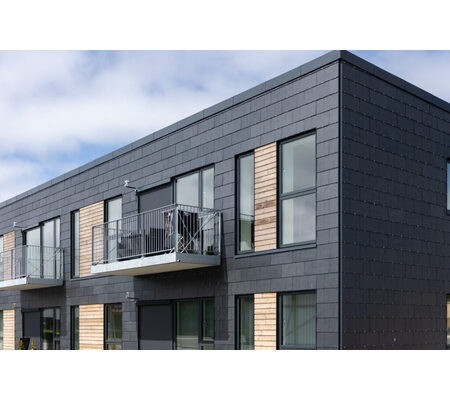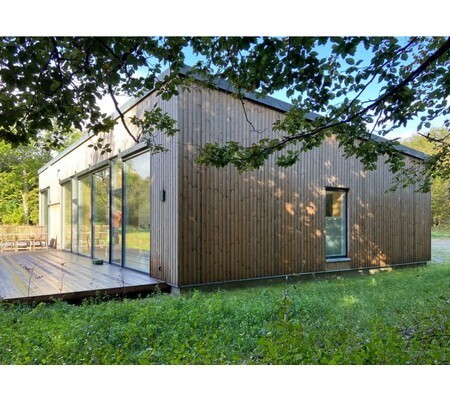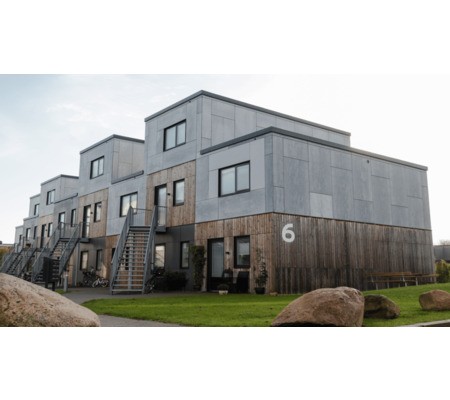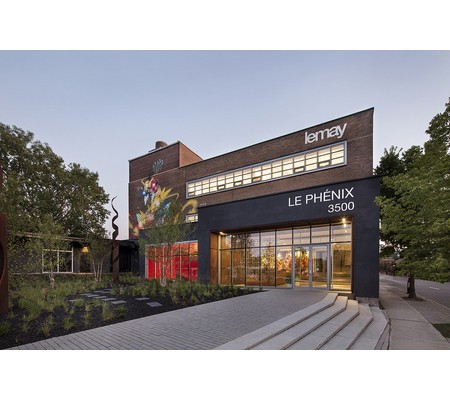CIEM BUILDING, Zaragoza
Last modified by the author on 27/02/2014 - 12:32
New Construction
- Building Type : Office building < 28m
- Construction Year : 2011
- Delivery year : 2011
- Address 1 - street : Av Autonomía nº7 50003 ZARAGOZA, España
- Climate zone : [BSh] Subtropical Dry Semiarid (Steppe)
- Net Floor Area : 2 309 m2
- Construction/refurbishment cost : 5 270 651 €
- Number of Work station : 110 Work station
- Cost/m2 : 2282.66 €/m2
-
Primary energy need
49.8 kWhpe/m2.year
(Calculation method : RD: 47/2007 )
As part of the urban development plan of the area surrounding Delicias Train Station, Zaragoza City Council seeks to create an urban space characterised by the use of new technologies; this is how the Digital Mile project came into being. The CIEM Building is a nZEB (net Zero Energy Building) building promoted by the City Council, and it forms a part of this setting, standing for the concept of sustainability in building. This building aims to showcase different energy efficiency solutions that were put forward during its creation, and which have enabled optimal energy savings and user comfort. The CIEM’s main differentiator in comparison to other such buildings lies in its fusion of a bioclimatic design (passive design) with active systems (air conditioning systems) and energy systems (photovoltaic, wind, biofuel and geothermal systems). The combination of all of these, plus the use of an intelligent management system, has obtained highly satisfactory results. The building was also designed as a research lab, where a large amount of data from sensors of all types is gathered. This, in addition to allowing us to discover the real time energy performance of the building, is an important source of information which will enable us to further optimise or improve the building's performance. The experience gained throughout the development of this process will also serve the environmental community. Today the building is fully operational as a “Business Incubator” with close to 100% occupancy. Part of this success is due to its image of sustainability and energy efficiency.
Data reliability
Self-declared
Stakeholders
Designer
Manuel Sánchez Iturbe
[email protected]; tf: 669809556; Zaragoza
Facility manager
Octavio Cabello Villalobos
[email protected]; tf:657553330; Zaragoza
Designer
Javier Gracia Martinez
tf: 678361306
Designer
Aurora Sánchez Iturbe
[email protected]; tf: 609.311.680
Contracting method
Other methods
Owner approach of sustainability
As a part of the Digital Mile project, Zaragoza City Council seeks to convey an image of sustainability through the first nZEB building in Aragon.
Architectural description
The CIEM building is a “zero emissions” designed to function as a business incubator. It is located in the area close to Delicias Train Station, Zaragoza, opposite the CAT (Center for Art and Technology) , in a park called Parque Equipado 1, which will form part of Zaragoza Digital Mile in the future. The passive (construction) and active (facilities) design elements work in harmony; they were not designed to be rigidly separate compartments. As such, the integrated design phase, composed by a multidisciplinary team, was one of the main features in this project since the design phase. The building is constructed around an atrium. This central space was not conceived to be a residual space; it is the spatial, functional and environmental heart of the building. It lets natural daylighting filter inside and is the centre of transit and a place for casual meetings. It also serves as a thermal and acoustic buffer between the outside and the inside and acts as bioclimatic resource. The CIEM´s simple form is cubic, wrapped in a double façade that regulates outdoor lighting, air conditioning and the ventilation of the interior spaces. The shape of the building is the result of an environmental strategy that harnesses cutting-edge technology to create an excellent working environment. The objective is to achieve optimal energy efficiency whilst also providing optimal comfort and applying bioclimatic criteria. The entire building has been oriented in the direction that makes best use of the external climate to benefit the interior climate. Because Zaragoza has extreme temperatures, in both summer and winter, the building captures or rejects outside heat, stores it and distributes it at the right time. These systems are controlled by an automated system with openings located in the double skin of the façade and the in upper courtyard. It is designed in line with passive architecture criteria, building systems that achieve optimal energy savings, working in conjunction with the air conditioning with floors and walls with high thermal inertia made from reinforced concrete and with insulation. Thanks to the double skin, in addition to thermally insulating the building, any infiltrations of unwanted air are prevented. The south facade harnesses solar radiation for the production of solar energy through thin-film photovoltaic panels. Moreover, the roof is protected from direct sunlight thanks to the shading provided by the photovoltaic panels.
If you had to do it again?
Given the issues arising from changes in legislation on the use of renewable energy in Spain, I would consider another solution focussing on auto-consumption with total or partial independence from the power grid.
Building users opinion
The building has an occupancy level of almost 100% which gives an indication of user satisfaction.
Energy consumption
- 49,80 kWhpe/m2.year
- 85,50 kWhpe/m2.year
- 79,00 kWhfe/m2.year
Envelope performance
- 0,29 W.m-2.K-1
- 0,19
- 27,00
Systems
- Geothermal heat pump
- Others
- Radiant ceiling
- VAV System
- Others
- No domestic hot water system
- Geothermal heat pump
- VAV Syst. (Variable Air Volume system)
- Floor cooling
- Radiant ceiling
- Others
- Natural ventilation
- Nocturnal ventilation
- Nocturnal Over ventilation
- Single flow
- Double flow heat exchanger
- Solar photovoltaic
- Heat pump (geothermal)
- Micro wind
- Biomass boiler
- 70,00 %
Smart Building
GHG emissions
- 16,50 KgCO2/m2/year
- 50,00 year(s)
Water management
- 350,00 m3
Indoor Air quality
Product
ALUMINUM EXTERIOR CARPENTRY
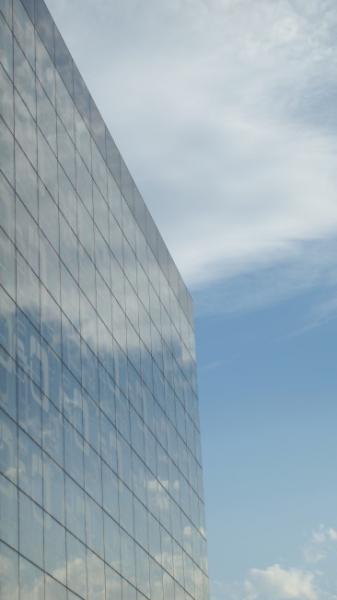
NORVENTAL
Pol. Ind. Monzú. C/ Gibraltar 44 - 46, Huesca; Tf: 974 24 12 93
http://www.norvental.com/
Norvental has managed to integrate photovoltaic panels and screen printed glass into the glass façade systems. The interplay between the different emissivities of the inner and outer glass allows us to achieve a strong greenhouse effect in the double façade, whilst allowing us to reduce the penetration of direct radiation into the inhabited areas.
It has given us an easy to implement and durable solution, which definitely solves the airtightness of the building
THERMAL INSULATION ISOVER IBR-80

ISOVER
+34 901 33 22 11;
http://www.isover.es/
THERMAL INSULATION OF THE ENVELOPE BY MEANS OF 8CM GLASS WOOL
Good thermal and acoustic insulation. Easy to install and economical.
MONOCRYSTALLINE PHOTOVOLTAIC PANELS
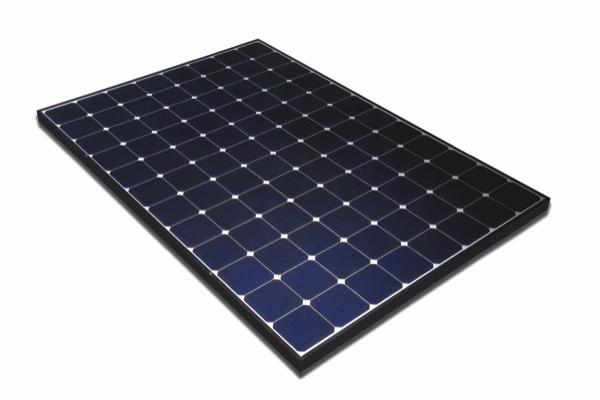
SUNPOWER
+34 917820746
http://www.sunpowercorp.es/
MONOCRYSTALLINE PHOTOVOLTAIC PANELS; SUNPOWER SPWR300
HIGHLY EFFICIENT PHOTOVOLTAIC PANELS, 300Wp
Vertical Wind Turbines: Urban Green Energy UGE-4K
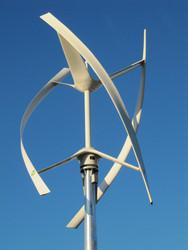
URBAN GREEN ENERGY
http://www.urbangreenenergy.com/Vertical wind turbine power 4 kW
Vertical wind turbines with very low noise pollution, able to harness the wind power potential in areas of high turbulence, as in the case of an urban setting.
Urban environment
The building is located on a plot of 3,004 m2 and occupies 23% of this. The rest comprises green areas and gardens. It is next to the CAT (Center for Art and Technology), close to Zaragoza Delicias Train Station. It is close to a hotel and shopping area. To the north of the site are the premises of the former Expo Zaragoza 2008. It is well-connected to one of the main gateways to Zaragoza and is very close to the high-speed train (AVE).
Land plot area
3 004,00 m2
Built-up area
23,00 %
Green space
108 000,00
Parking spaces
The CIEM has its own car park with space for 21 cars, and nearby there is lots of space in the former south car park of Expo Zaragoza 2008.





